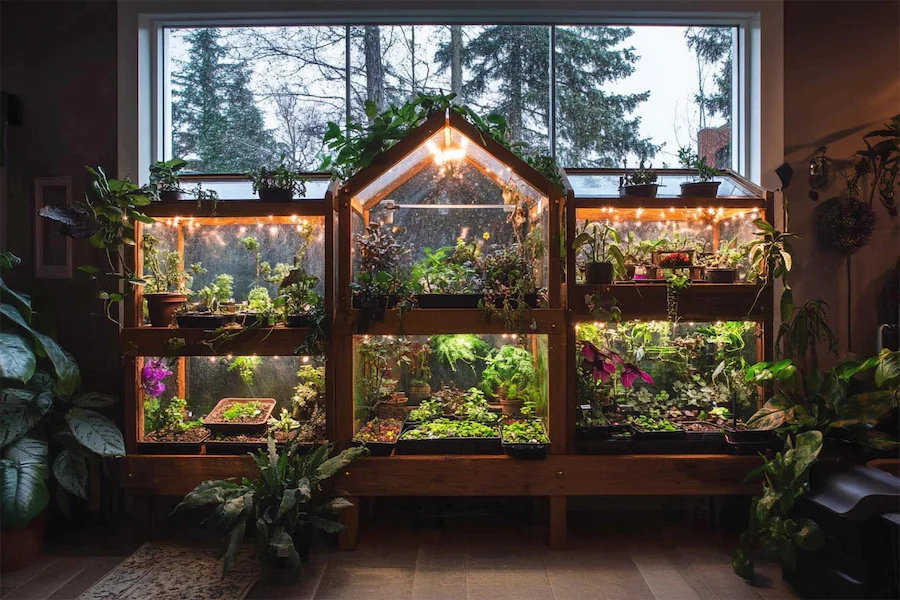An Indoor Greenhouse Garden is a dedicated space within your home designed to cultivate plants by providing a controlled environment that simulates optimal growing conditions. This setup allows for year-round gardening, regardless of external weather conditions, and is particularly beneficial for urban dwellers or those with limited outdoor space.
History and Origins of Indoor Greenhouse Gardens
The concept of indoor gardening has evolved over centuries, with early examples including the use of cloches and cold frames to protect plants from harsh climates. The modern indoor greenhouse integrates advanced technologies and design principles to create efficient and aesthetically pleasing plant-growing environments within residential spaces.
Key Features of Indoor Greenhouse Gardens
- Controlled Environment: Indoor greenhouses maintain stable temperature, humidity, and light conditions, essential for plant health. This control minimizes the impact of seasonal changes and external weather variations.
- Space Efficiency: Designed to fit within various indoor settings, these greenhouses range from tabletop models to larger cabinet-style structures, making them suitable for apartments, homes, or offices.
- Pest Management: Enclosing plants reduces exposure to common pests, decreasing the need for chemical pesticides and promoting healthier growth.
Applications of Indoor Greenhouse Gardens
- Herb and Vegetable Cultivation: Grow fresh herbs and small vegetables year-round, ensuring a continuous supply of homegrown produce. For instance, indoor gardening kits like AeroGarden are highly recommended for their efficiency and ease of use, even for beginners.
- Ornamental Plant Display: Create a lush indoor oasis by cultivating a variety of ornamental plants, enhancing interior aesthetics and improving air quality. Plants like snake plants, pothos, and ZZ plants are known for their low-maintenance needs and air-purifying abilities.
- Seed Starting and Propagation: Provide optimal conditions for germinating seeds and propagating plant cuttings, facilitating the expansion of your garden. Indoor greenhouses are ideal for starting seedlings early in the spring or protecting tender plants during the winter months.
Considerations When Creating an Indoor Greenhouse Garden
- Lighting: Adequate light is crucial for photosynthesis. If natural light is insufficient, especially during shorter winter days, supplement with grow lights to meet plant needs. LED grow lights are energy-efficient options that provide the necessary light spectrum for plant growth.
- Ventilation: Proper air circulation prevents mold growth and ensures plants receive sufficient carbon dioxide. Incorporate fans or ventilation panels to maintain airflow within the greenhouse.
- Watering and Humidity: Monitor soil moisture levels and maintain appropriate humidity to support plant health. Some indoor greenhouses come with built-in irrigation systems, or you can opt for self-watering planters to simplify maintenance.
Conclusion
Establishing an Indoor Greenhouse Garden offers a practical and rewarding way to engage in gardening, regardless of external space or climate constraints. By providing a controlled environment, you can cultivate a diverse range of plants, from edibles to ornamentals, enhancing your living space with greenery and promoting well-being.
